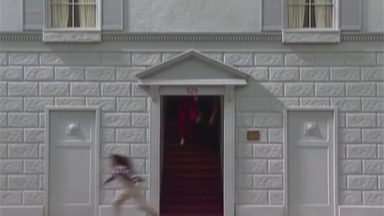1965/Képzőművészeti Gimnázium / IV. B – István Horkay.
Collaborators: Roland Quelven, Tania Giannouli (Music), and Pacific Nihil.
Horkay’s art is epitomic in the double meaning of the word: a fragment, an incised part of something already in existence, and – just because of this incision – is an injury to the finished surface, to the tangle of writing or a finished picture. This relies on the experience that man, handing himself down through signs, simulates a kind of sense-wholeness. In these series this textual sense-wholeness appears to be ever different as different colors enter the surface at different sites. It is the same and not the same at the same time. «Once the signs are scars, then the wounds will tell tales of some non-alleviated history» (D. Kamper – Zur Soziologie der Imagination Hanser V. 1986. p. 148).
The sign will temporarily closen over the story. Who else would know this better than Freud, who, after the neurological-physiological and neuropsychical phases, so deeply doubted that it was possible «to bring to light the hidden content in its wholeness»
(Konstruktionen in der Analyse 1937. in: Stud. Ausgabe Ergb. Fischer V. 1982. p. 398). Béla Bacsó
About the author:
István Horkay (born December 25, 1945 in Budapest) is a Hungarian painter.
After graduating from the School of Fine Arts in Budapest in 1964, Horkay was invited to attend the Academy of Fine Arts in Cracow -Poland, one of the Major Art and Cultural Centers of Eastern Europe, where he received his Master of Fine Arts. He continued his Studies at the Royal Academy of Art in Copenhagen, Denmark. (1968) and did additional Post graduate work at the Academy of Fine Arts in Budapest. (1971) Horkay studied under the Internationally known Artist and Theater Director Tadeusz Kantor as well as Professors M. Wejman, J. Nowosielski, and Palle Nielsen, Danmark. He received Diplomas in Graphic Arts, Painting, and Film Animation.











